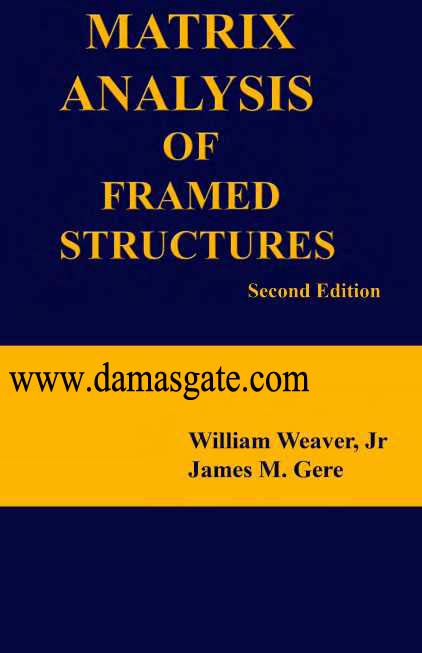Matrix Analysis of Framed Structure
The advent of the digital computer made it necessary to reorganize the theory of structures into matrix form, and the first edition of this book was
written for that purpose. It covered the analysis of all types of framed structures by the flexibility and stiffness methods, with emphasis on the latter approach. At that time, it was evident that the stiffness method was superior for digital computation, but for completeness both methods were extensively discussed. Now the flexibility method should play a less im- portant role and be characterized as a supplementary approach instead of a complementary method. The flexibility method cannot be discarded altogether, however, because it is often necessary to obtain stiffnesses through flexibility techniques.

This book .was written as a text for college students on the subject of the analysis of framed structures by matrix methods. The preparation needed
to study the subject is normally gained from the first portion of an under- graduate engineering program; specifically, the reader should be familiar
with statics and mechanics of materials, as well as algebra and introduc- tory calculus. A prior course in elementary structural analysis would naturally be beneficial, although it is not a prerequisite for the subject matter of the book. Elementary matrix algebra is used throughout the book, and the reader must be familiar with this subject. Since the topics needed from matrix algebra are of an elementary nature, the reader can acquire the necessary knowledge through self-study during a period of two or three weeks. A separate mathematics course in matrix algebra is not necessary, although some students will wish to take such a course in preparation for more advanced work. To assist those who need only an introduction to matrix algebra, without benefit of a formal course, the authors have written a supplementary book on the subject.*
There are several reasons why matrix analysis of structures is vital to the structural analyst. One of the most important is that it makes possible
a comprehensive approach to the subject that is valid for structures of all types. A second reason is that it provides an efficient means of describing the various steps in the analysis, so that these steps can be more easily programmed for a digital computer. The use of matrices is natural when
performing calculations with a computer, because they permit large groups of numbers to be manipulated in a simple and effective manner.
The reader will find that the methods of analysis developed in this book are highly organized and that the same basic procedures can be followed in the analysis of all types of framed structures.
Download
*